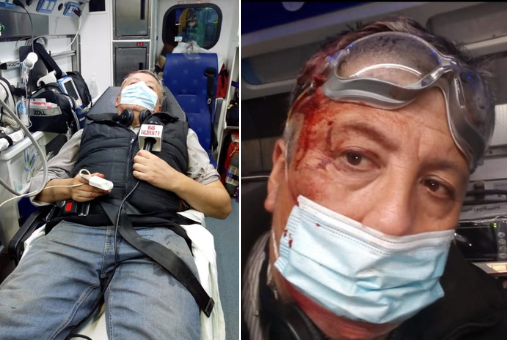
For at least four years, journalist Juliana Dal Piva has been trying to “understand who is Jair Bolsonaro,” as she said in an interview with LatAm Journalism Review (LJR). She is perhaps one of the Brazilian journalists most dedicated to that mission. Read below the interview with Juliana Dal Piva, the first in the "Five Questions" series, which we are premiering at LJR. (The interview has been edited for clarity and brevity).

Two journalists were killed by gang members in Haiti on Jan. 6. A police report said their bodies had been recovered with "large-caliber bullet wounds," according to AP. Several organizations demand thorough investigations.

The Article 19 organization, which has documented three violations and attacks on press freedom in Jalisco in less than a month, said these events show signs of a tendency of the state government to censor the press using legal action.

Journalists in the Peruvian capital faced a record number of 105 cases of assault while carrying out their work, especially during the months of presidential election campaigns that were infused with a high social, political and media polarization.

LatAm Journalism Review spoke with five journalists from the region who suffered some type of physical violence in their coverage of recent protests in Chile, Bolivia, Peru, Brazil, and Colombia and shows the vulnerability of press professionals from protesters of different political strata and also from security forces.

The number of journalists murdered decreased in 2021 compared to 2020 worldwide. However, Mexico remains the most lethal country for journalists in the region, with 3 confirmed cases and 6 unconfirmed cases of journalists killed for their profession, according to the annual census of the Committee to Protect Journalists.

While legal harassment of well-known Guatemala City journalists José Rubén Zamora, publisher of the daily elPeriódico, and Juan Luis Font of the broadcast analysis program Con Criterio have made international news in recent months, less well-known are attacks against vulnerable journalists who live away from the capital—in provincial cities and in the rural areas of […]
The following reports are part of a LatAm Journalism Review project on journalist safety in Latin America and the Caribbean, which is funded by UNESCO's Global Media Defence Fund. The stories focus on prevention of aggressions against journalists in the context of protests and violent conflict; the development of mechanisms to protect journalists from harm […]

Pese a que en América Latina la cifra de periodistas en prisión es relativamente baja, el CPJ advirtió que en 2021 se registró un preocupante deterioro en la situación de la libertad de prensa en la región al considerar otros indicadores.

Given the recent increase in attacks and harassment of journalists in the Central American country, Prensa Contra la Censura intends to raise awareness among Guatemalans as to the importance of defending independent journalism.

A Peruvian court has sentenced Alberto Fujimori's former presidential adviser, Vladimiro Montesinos, to 17 years in prison for the abduction of Peruvian journalist Gustavo Gorriti in April 1992. The journalist said that, although he believes the sentence to be fair, it ended up being a very long process.

Members of the press have faced extrajudicial house arrests, summons with authorities, suspension of services, withdrawal of accreditations and the presence of security agents near their homes since days before the 15-N protests.